Halliburton Bundle
Who Really Controls Halliburton?
Unraveling the mystery of 'Who Owns Halliburton Company?' is crucial for anyone invested in the energy sector's future. This exploration goes beyond surface-level ownership, offering a deep dive into the forces shaping Halliburton's strategic decisions and financial performance. From its humble beginnings to its current global dominance, understanding Halliburton's ownership is key to grasping its trajectory.
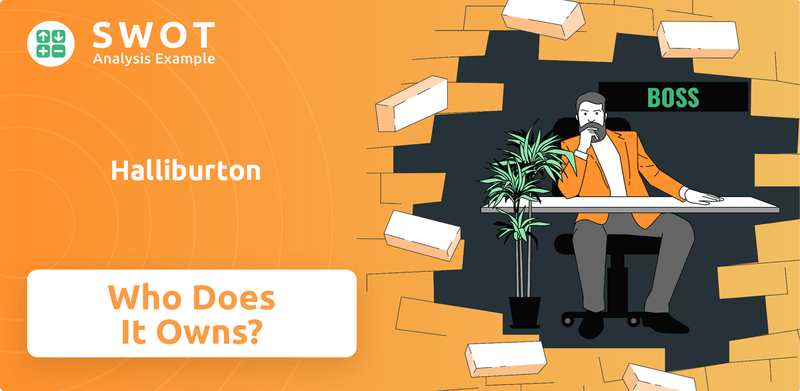
Founded in 1919, Halliburton's journey from a small oil well cementing company to a global powerhouse is a testament to its resilience and strategic adaptation. Understanding the Halliburton SWOT Analysis, alongside the shifts in Halliburton ownership, provides a comprehensive view of the company's strengths and weaknesses. This analysis will examine the influence of Halliburton shareholders, executives, and the evolution of its ownership structure, offering valuable insights for investors and industry observers alike.
Who Founded Halliburton?
The story of the Halliburton company begins in 1919 with Erle P. Halliburton, who established the New Method Oil Well Cementing Company in Duncan, Oklahoma. His pioneering work in oil-well cementing set the stage for the company's future. Halliburton's innovations, like the truck-mounted jet mixer, quickly gained recognition within the burgeoning American petroleum industry.
In 1924, the company was formally incorporated in Delaware. The initial ownership structure was a strategic alliance. Erle and Vida Halliburton held stock alongside seven major oil companies, showcasing a partnership between the innovator and key industry players.
The Halliburton Oil Well Cementing Company (HOWCO) thrived during the Mexia, Texas oil boom, cementing its 500th well by late summer 1922. Erle P. Halliburton continued to innovate, patenting 38 oilfield services and tools throughout his career. The public first had the opportunity to purchase stock in 1948.
The early ownership of the Halliburton company reveals a strategic approach to growth and market penetration. This structure allowed the company to secure significant backing from major players in the oil industry. To learn more about the company's background, read Brief History of Halliburton.
- Erle and Vida Halliburton were the primary founders.
- Seven major oil companies held stock.
- This structure facilitated technological advancement and market expansion.
- HOWCO's success was fueled by the Mexia, Texas oil boom.
Halliburton SWOT Analysis
- Complete SWOT Breakdown
- Fully Customizable
- Editable in Excel & Word
- Professional Formatting
- Investor-Ready Format
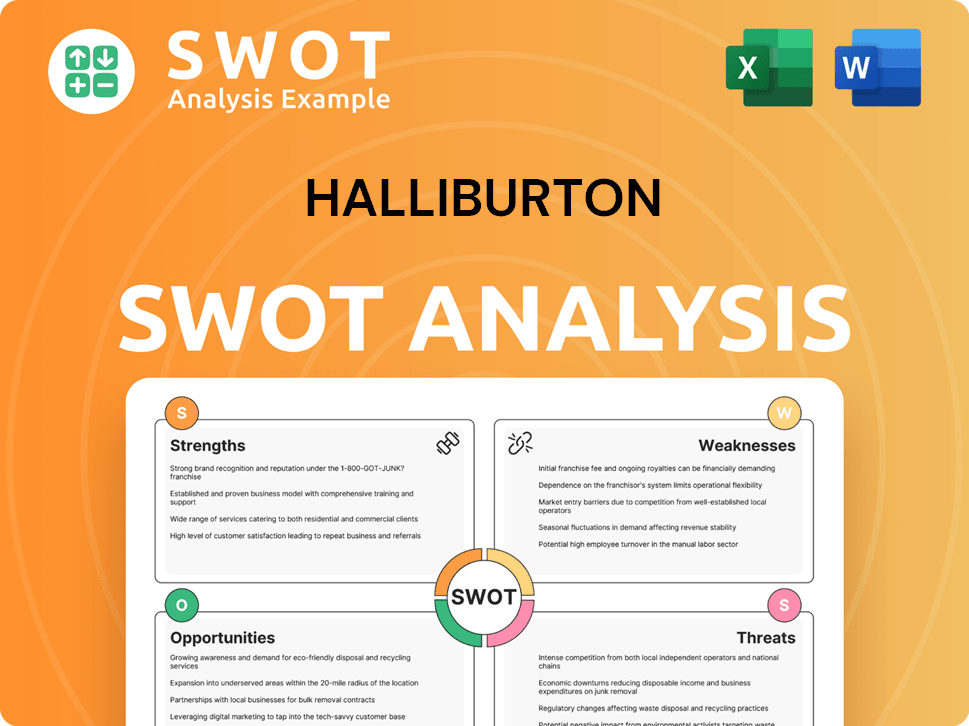
How Has Halliburton’s Ownership Changed Over Time?
The Halliburton company went public on September 15, 1948. Over time, the ownership structure has evolved, with institutional investors gaining a dominant position. This shift reflects broader trends in the financial markets, where institutional investors often hold significant stakes in publicly traded companies.
As of March 15, 2025, institutional shareholders control a substantial portion of Halliburton, holding approximately 86% of the company. This high level of institutional ownership indicates that the company's stock performance is closely tied to the investment decisions of these major shareholders. Individual insiders and retail investors hold smaller percentages, contributing to the diverse ownership landscape.
| Shareholder Type | Approximate Ownership (as of April 2025) | Details |
|---|---|---|
| Institutional Shareholders | ~86% | Includes Vanguard, BlackRock, State Street, and others. |
| Individual Insiders | ~0.89% | Includes company executives and board members. |
| Retail Investors | ~16.39% | Includes individual shareholders. |
The major institutional shareholders significantly influence Halliburton's strategic direction and governance. Key institutional investors include Vanguard Group Inc., the largest individual shareholder, owning 12.07% of the company as of June 10, 2025, representing 103.75 million shares. Other significant shareholders as of April 2025 are BlackRock, Inc. with 8.1% ownership, and State Street Corp with 6.076%. The concentration of ownership among these large investors grants them considerable influence over board decisions and company strategy. In 2024, Halliburton's revenue remained essentially flat year over year, with a decline in North American revenues offset by increases in international markets, highlighting the company's strategic focus.
Institutional investors are the primary owners of Halliburton, wielding significant influence over the company's strategic direction.
- Vanguard is the largest individual shareholder.
- BlackRock and State Street also hold substantial stakes.
- The company's financial performance is influenced by international market strategies.
Halliburton PESTLE Analysis
- Covers All 6 PESTLE Categories
- No Research Needed – Save Hours of Work
- Built by Experts, Trusted by Consultants
- Instant Download, Ready to Use
- 100% Editable, Fully Customizable
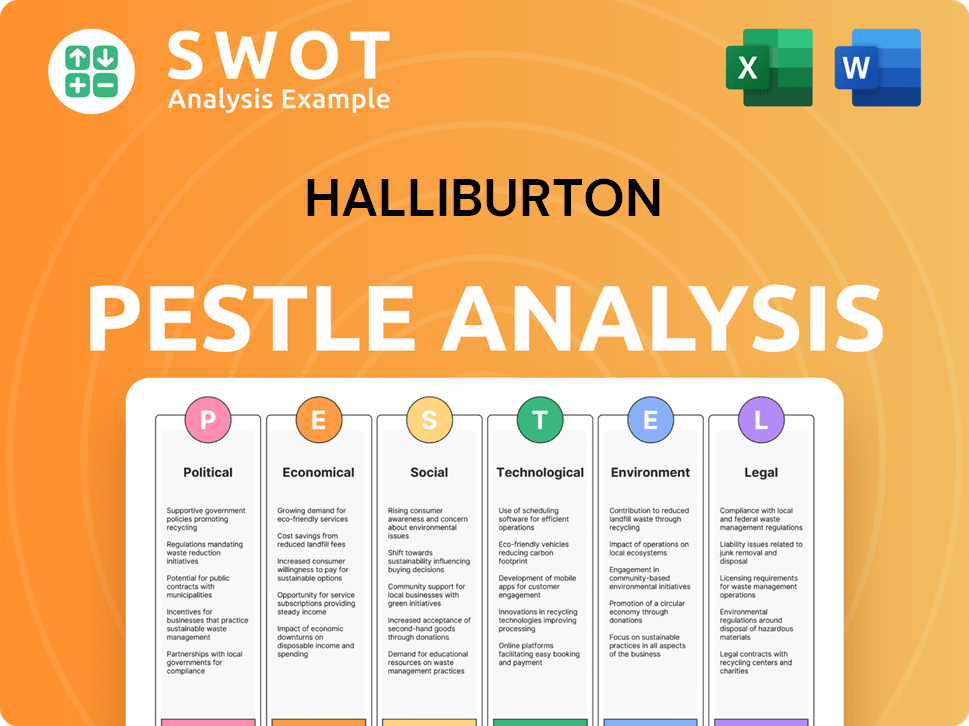
Who Sits on Halliburton’s Board?
The current board of directors at the Halliburton company is pivotal in steering the company's strategic direction and overseeing its operations. While specific affiliations of board members with major shareholders are not always detailed in public summaries, the substantial institutional ownership suggests that the board is likely attentive to the interests of these large investors. Understanding the dynamics of the board is crucial for anyone examining Halliburton ownership and its governance structure.
The board's composition and responsiveness are vital aspects of Halliburton's corporate governance. The board's role is to ensure the company's long-term success, which is especially important given the company's history and its position in the energy services sector. The board's decisions significantly impact Halliburton shareholders and the company's overall financial performance. For insights into the competitive environment, you can explore the Competitors Landscape of Halliburton.
| Board Member | Title | Age |
|---|---|---|
| Jeff Miller | Chairman, President, and CEO | 60 |
| William R. Thomas | Lead Independent Director | 71 |
| N. John Simmons | Director | 70 |
The voting structure for Halliburton common stock follows a one-share, one-vote principle. Each holder of common stock is entitled to one vote per share on all matters presented to stockholders, including the election of directors. There are no cumulative voting rights. Halliburton's authorized capital stock consists of 2,000,000,000 shares of common stock and 5,000,000 shares of preferred stock, though no preferred shares are currently outstanding. The company's by-laws allow for the number of directors to be between 8 and 20, fixed by either the board or stockholders, and vacancies can be filled by the remaining directors. Recent SEC filings show changes in beneficial ownership of securities by company insiders, reflecting ongoing director dealings.
Halliburton's board of directors oversees the company's strategic direction. Institutional investors significantly influence the board's actions. The voting structure is straightforward, with one vote per share.
- The board's composition is crucial for Halliburton's governance.
- The one-share, one-vote system ensures fair voting rights.
- Ongoing SEC filings provide insights into insider dealings.
- Understanding the board's structure is vital for assessing Halliburton's ownership and control.
Halliburton Business Model Canvas
- Complete 9-Block Business Model Canvas
- Effortlessly Communicate Your Business Strategy
- Investor-Ready BMC Format
- 100% Editable and Customizable
- Clear and Structured Layout
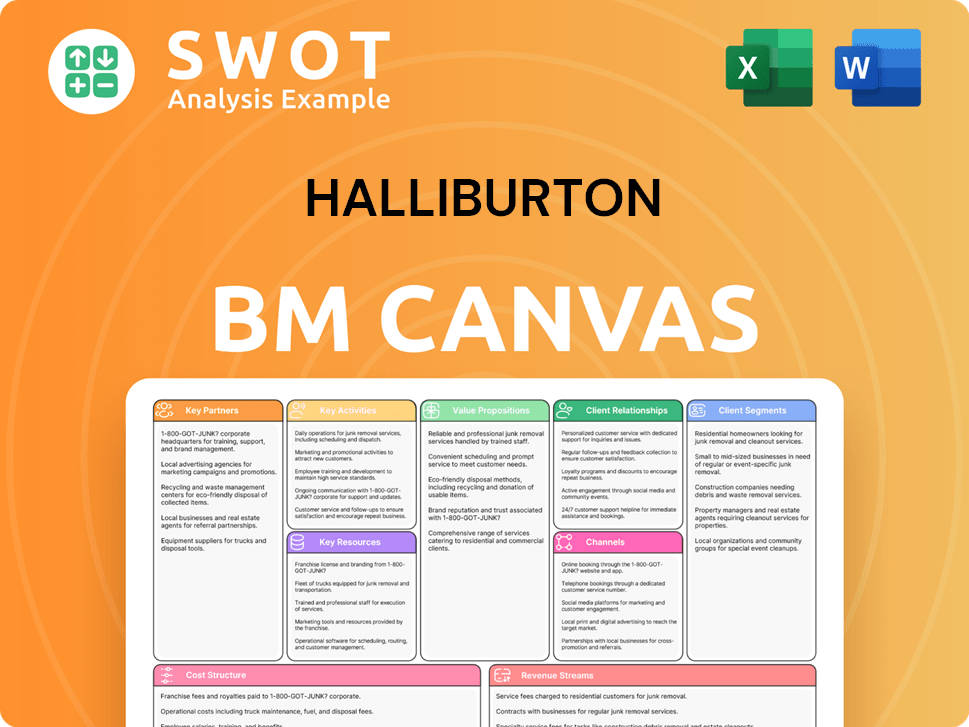
What Recent Changes Have Shaped Halliburton’s Ownership Landscape?
In recent years, the ownership structure of the Halliburton company has been shaped by strategic financial decisions and industry trends. The company has actively engaged in share buybacks, reflecting a commitment to returning value to Halliburton shareholders. For instance, in the first quarter of 2025, Halliburton repurchased approximately $250 million of its common stock, following $309 million in the fourth quarter of 2024 and $200 million in the third quarter of 2024. The total share buybacks for 2024 reached $1.005 billion. Management anticipates distributing at least $1.6 billion to shareholders through dividends and share repurchases in 2025.
Institutional investors hold a significant portion of Halliburton ownership. As of March 15, 2025, institutional investors controlled approximately 86% of the company. Halliburton's approach to mergers and acquisitions is focused on acquiring technology rather than entire corporations. Recent acquisitions include Optime Subsea in December 2024 and Resoptima in June 2023. This strategic focus, combined with share repurchases, influences the overall Halliburton ownership landscape.
The company's CEO, Jeff Miller, anticipates a 6% to 8% decline in North American revenues for the full year 2024, but expects activity to be directionally higher in 2025. This expectation is partly due to the recent M&A activity in the E&P space and the divestment of merged assets to smaller operators. For additional insights into Halliburton's business operations, consider exploring the Revenue Streams & Business Model of Halliburton.
Halliburton repurchased approximately $250 million of its common stock in Q1 2025. Annual share buybacks for 2024 reached $1.005 billion. This indicates a strategy to increase shareholder value.
Institutional investors control approximately 86% of Halliburton as of March 15, 2025. This highlights the significant influence of institutional investors on the company.
Halliburton Porter's Five Forces Analysis
- Covers All 5 Competitive Forces in Detail
- Structured for Consultants, Students, and Founders
- 100% Editable in Microsoft Word & Excel
- Instant Digital Download – Use Immediately
- Compatible with Mac & PC – Fully Unlocked
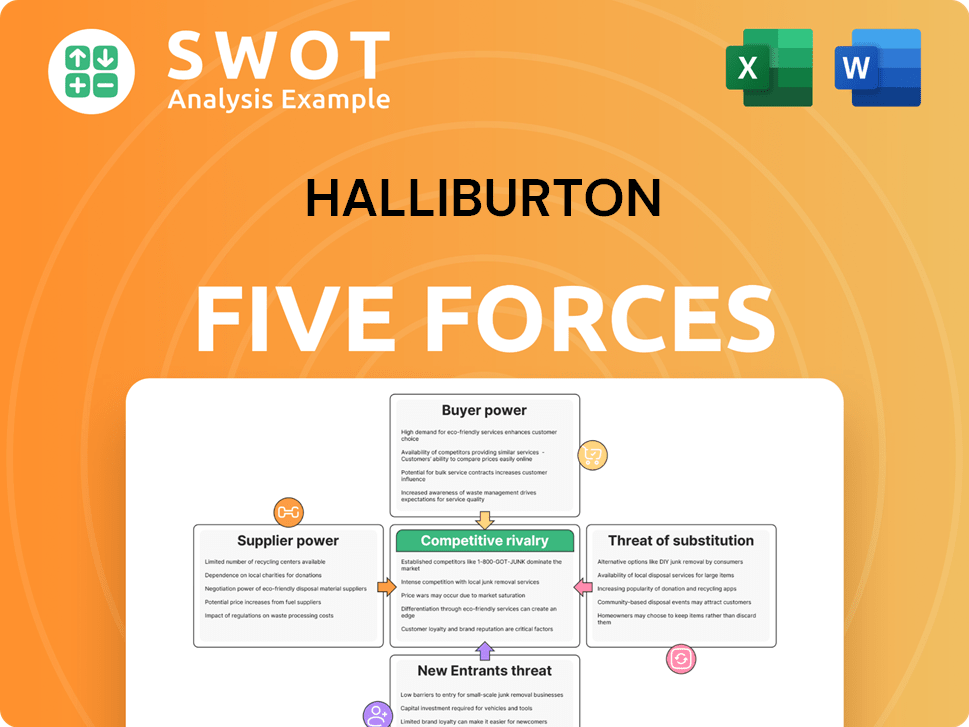
Related Blogs
- What are Mission Vision & Core Values of Halliburton Company?
- What is Competitive Landscape of Halliburton Company?
- What is Growth Strategy and Future Prospects of Halliburton Company?
- How Does Halliburton Company Work?
- What is Sales and Marketing Strategy of Halliburton Company?
- What is Brief History of Halliburton Company?
- What is Customer Demographics and Target Market of Halliburton Company?
Disclaimer
All information, articles, and product details provided on this website are for general informational and educational purposes only. We do not claim any ownership over, nor do we intend to infringe upon, any trademarks, copyrights, logos, brand names, or other intellectual property mentioned or depicted on this site. Such intellectual property remains the property of its respective owners, and any references here are made solely for identification or informational purposes, without implying any affiliation, endorsement, or partnership.
We make no representations or warranties, express or implied, regarding the accuracy, completeness, or suitability of any content or products presented. Nothing on this website should be construed as legal, tax, investment, financial, medical, or other professional advice. In addition, no part of this site—including articles or product references—constitutes a solicitation, recommendation, endorsement, advertisement, or offer to buy or sell any securities, franchises, or other financial instruments, particularly in jurisdictions where such activity would be unlawful.
All content is of a general nature and may not address the specific circumstances of any individual or entity. It is not a substitute for professional advice or services. Any actions you take based on the information provided here are strictly at your own risk. You accept full responsibility for any decisions or outcomes arising from your use of this website and agree to release us from any liability in connection with your use of, or reliance upon, the content or products found herein.